Mary Ann Booth, 1843 – 1922
by Brian Stevenson
last updated March, 2014
As a well respected, professional scientist, Mary Ann Booth
was a rare woman of her times. She was widely published, was sought after for
lectures, and for many years served as microscopy editor for scientific
magazines such as The Observer, Practical Microscopy, and The Guide to Nature. She was elected as
a Fellow of the Royal Microscopical Society in 1889. At that time, there were
only two other female Fellows of the RMS: Miss Eliza Catherine Jelly, of
Redhill, Surrey, and Miss Vida Annette Latham, of the Dental Department,
Michigan University, Ann Arbor, Michigan USA. In addition, Booth was a Fellow
of the American Association for the Advancement of Science and of the Royal
Photographic Society, and a member of the American Microscopic Society, the
Brooklyn Institute of Arts and Sciences, and the Daughters of the American
Revolution. In 1915, she was described as “one
of the greatest living authorities on photographs taken through a microscope”.
Booth’s microscope slides of diatoms and pollens were
especially well regarded for their even distribution of specimens and high
quality finish. Her slides are nowadays encountered with some frequency at
auctions on both sides of the Atlantic, attesting to her substantial output and
world-wide customer base.
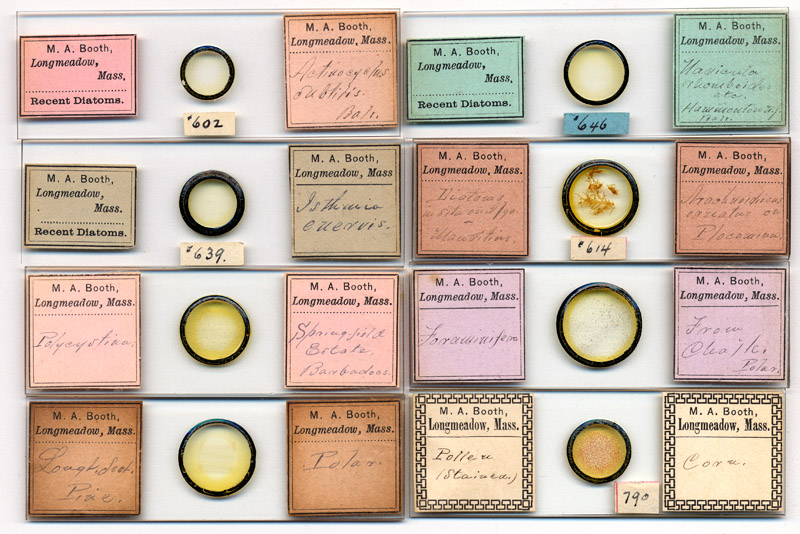
Figure 1. Examples of microscope slides produced by Mary Ann
Booth. She began microscopy studies in 1877, and is known to have sold slides
by 1884. The address of Longmeadow, Massachusetts date these slides to before
1898; by that date she lived in Springfield, Massachusetts. The majority of
Booth’s advertisements refer to her diatom mounts, and these are by far the
most abundant today. Diatom mounts chiefly consisted of strews, although diatoms
in situ on seaweeds are frequently encountered. Booth was also well regarded
for her slides of pollens, both stained and unstained. Other subject matter,
such as the section of pine wood at lower left, are less common.
Mary Ann Booth was born September 8, 1843 in Longmeadow,
Massachusetts, daughter of Samuel and Rhoda Colton Booth. Both parents came
from old families of the area. Samuel’s first wife had died in 1839, leaving
him with a 1 year old son. Samuel and Rhoda married ten months later, a common
occurrence of the times. Mary Ann was their only child. A biography of the
Booth family described Samuel as both a practical man and one driven to
scientific pursuits. His “career was a
remarkable illustration of the ordering of a whole life with one end in view,
and that end the gratification of a scientific instinct”. Orphaned at the
age of 14, Samuel dropped out of school and applied himself to farming. “Mr. Booth spent the first fifty years of his
life in unremitting toil, carefully and skillfully cultivating his farm in
Longmeadow, practicing economy and wisely investing his surplus funds. At the
end of that period he found himself in the position in which he had been trying
to reach, and from that time until he became too weak to move about his house,
he was busily at work. The subjects of his study were mineralogy, geology and
general natural history . . his collection of mounted specimens of our native
birds is interesting and fairly complete. His collection of minerals and
fossils was almost unlimited, nearly every available nook and corner of the
buildings on his premises being filled during his life with specimens. His
collection of Indian relics was without doubt the largest in the vicinity, and
included specimens from almost every state in the union and from Canada”.
Many scientists and collectors can relate to the following: “Mr. Booth worked persevering and steadily
when it seemed as if the result of his collections must be solely the pleasure
which he himself derived from them. But they gave him a happy old age, and an
interest in life at a period when most interests fail. Indeed, Mr. Booth's
physician positively stated that his interest in nature was the means of
prolonging his life”.
Several published records describe Mary Ann as having been “invalid”, but do not reveal the nature
of her handicap. She never married.
Mary Ann helped her father throughout his life. Summers at
the sea shore reportedly got her interested in microscopy. That may explain her
later expertise and fascination with diatoms.
Family history reports that Booth began her microscopy
studies in 1877. By the following year, she was advertising to exchange “marine algae, diatoms in situ on algae,
musci, hepaticae, ferns, lichens, lycopodiaceas, etc., . . for any good mounted
objects”, and “marine algae for the
herbarium; Northern N. E. and Florida species particularly desired; named species, for dried alga of those sections”. Her
skills at diatom collecting and cleaning advanced quickly, as Booth advertised
in 1878 that she wanted to obtain “a good
stage micrometer, in exchange for fine diatoms and other desirable material”. In 1878, the San Francisco Microscopical Society reported that they obtained specimens of the diatoms Tabellaria flocculosa and Fragilaria virescens from exchange with Mary Ann Booth. Those diatoms were probably not mounted on slides, as suggested by an exchange advertisement in that year’s American Naturalist for “Diatoms: Rhabdonema adriatica, Synedra ulna,
splendens and superba, Tabellaria flocculosa, Fragilaria virescens, Isthmia
nervosa, diatomaceous earths and other unmounted material, for named diatoms or
other good mounted objects. M.A. Booth, Longmeadow,
Mass”. In 1880, she advertised “Pleurosigmas and other unmounted Diatoms,
both Fresh Water and Marine; also Marine Algae, Ferns, and
a large quantity of miscellaneous microscopical material
in exchange for good mounted objects”.
All this shipping of diatoms in glass containers led to run-ins with
the Post Office, as described in an 1884 letter to the American Monthly Microscopical Journal (Figure 2).
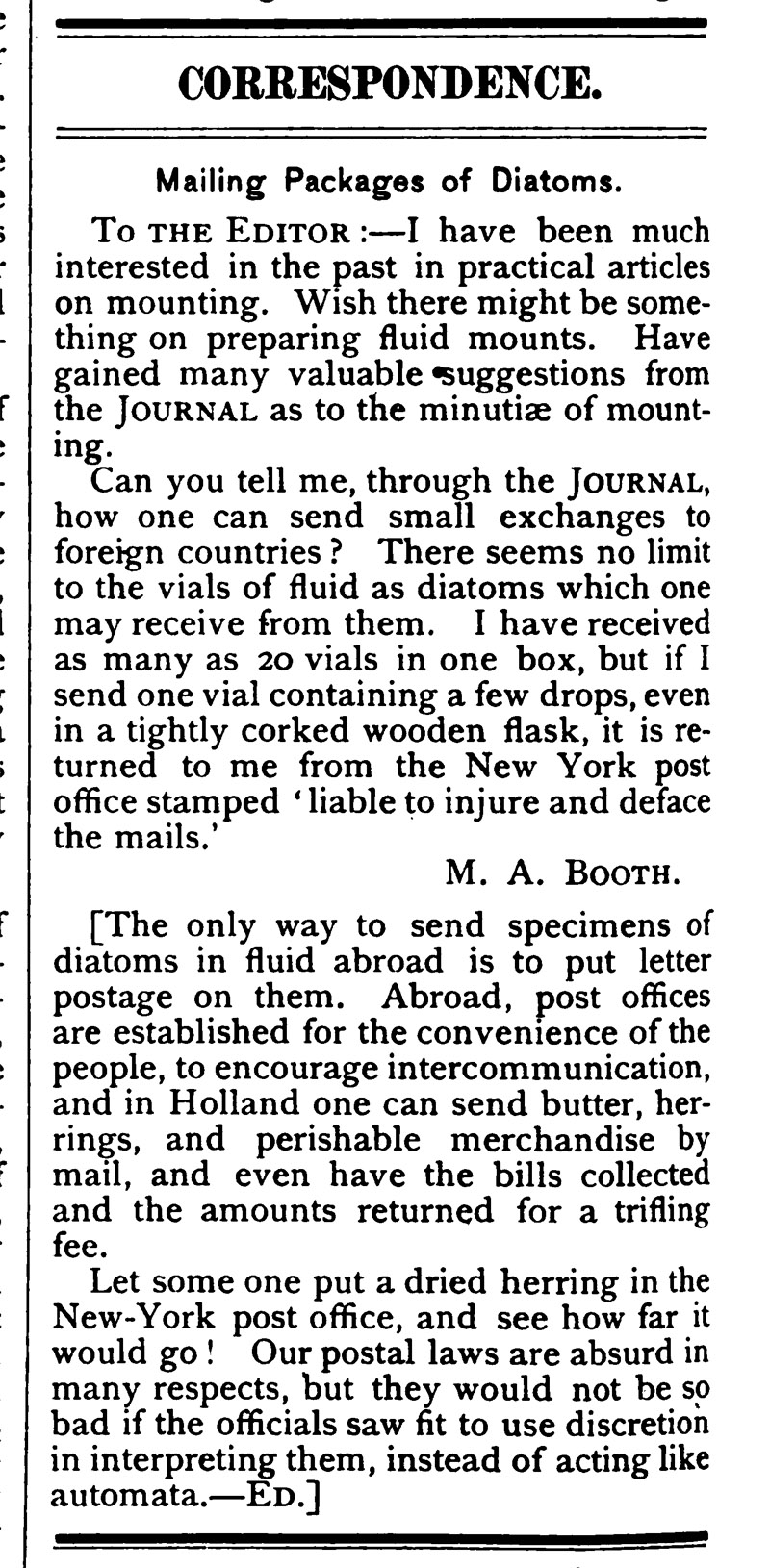
Figure 2. A letter from Mary Ann Booth to the American Monthly Microscopical Journal, published November, 1884.
By 1884, Booth had acquired substantial skills in
slide making. The November issue of the American Monthly Microscopical Journal
reported having received “excellent
mounts” of mosquito scales and Tabellaria
flocculosa diatoms from Miss Booth (Figure 3). The scales were “evenly distributed over the field”, a remarkable feat. In 1886, a member of the
Torrey Botanical Club (New York) wrote to his colleagues in the Club’s Bulletin, “Diatom Slides. It may be of interest to some of our readers who are interested
in diatoms, to know that Miss M. A. Booth, of
Longmeadow, Mass., makes a specialty of preparing microscopical slides of named
species as well as of general deposits. These slides are well-mounted and
reliably named, and those who are seeking certain species to complete
collections will do well to send for her list”.
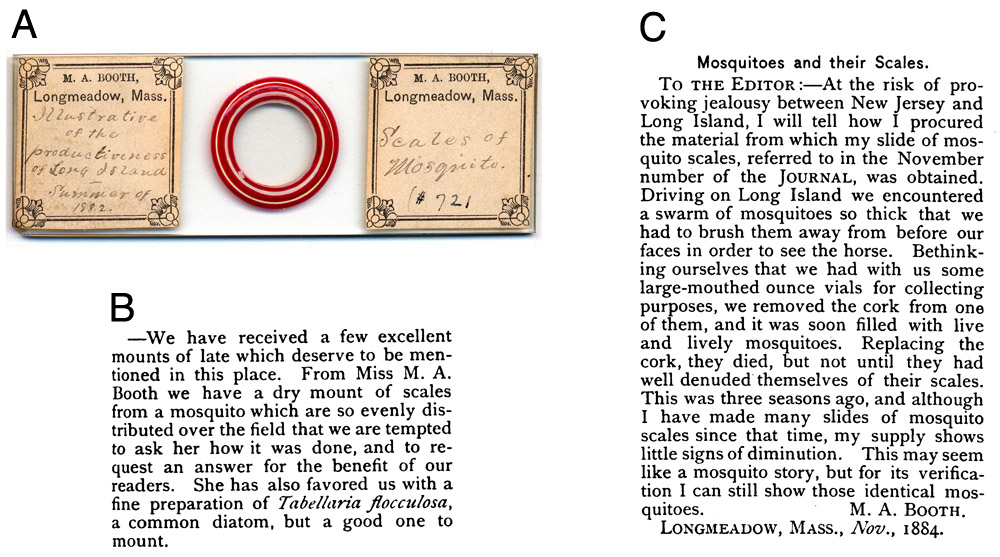
Figure 3. It is a rare treat to find details of a specific
item in one’s collection. (A) A Mary
Ann Booth preparation of “scales of mosquito”, “illustrative of the
productiveness of Long Island – summer of 1882”. (B) An 1884 note from the editors of the American
Monthly Microscopical Journal, describing such a slide.
Professional slide makers frequently sent samples of their work to journals
such as this, in the hope of free advertising. (C) A response letter from Booth to the same journal, describing
how she acquired the mosquito scales “three seasons ago” (i.e. 1882). Note how
Booth evaded the journal’s real question, which was how she distributed the
scales evenly across the slide. A burgeoning professional, she was already wise
enough not to give away production secrets.
Booth earned a Diploma of Honor in Entomology (Women’s Department) at the 1884-85 New Orleans World’s Industrial and Cotton Centennial Exposition for her “prepared slides for the microscope”.
Her slide-making skills were discussed at length in The Journal of the Royal Microscopical
Society, in 1886. They noted that Booth had a standing offer to replace any
slide that failed (such as colored sealing cement leaked into the clear
mounting medium), but no one had ever take up the offer. Her secret was white
zinc cement. She also noted that she used brass curtain rings to make cells on
slides. “Why do Dry Mounts Fail? Miss M.
A. Booth, in looking over her collection of slides, representing the work of
European and American preparers, with a view to noting their keeping qualities,
has been so surprised at the number of failures as to query whether permanence
in microscopical work is possible. Why is it that so large a proportion of dry
mounts fail? Obviously because that motto which should emphatically be the
microscopist's motto, festina lente, is not heeded by all workers. The advances
in the merely mechanical portions of mounting have evidently not kept pace with
those in its purely scientific departments, or else microscopists sometimes
forget to take counsel of their good common sense in the use of cements. In her
collection are slides which have cost hours of skilful manipulation and yet are
utterly ruined because of inattention to the details of the proper use of a
cement. How do we sometimes apply balsam to a mount? By running it under the
cover and trusting to capillary attraction to fill the field. But why should
this law of capillary action be operative in the case of the balsam and
suspended in that of the cement? From careful observation and a not limited experience—speaking
of dry mounts of diatoms and the like - Miss Booth is convinced that success or
failure depends not so much upon the kind of cement used, as upon the care with
which it is used.
In her own work, however,
she has fixed upon white zinc as the most reliable cement, and has sent out
hundreds of slides made with this cement, accompanied with the request that all
failures be returned, so that she might replace them with perfect slides; but
not a slide has ever been returned. It has been her experience that white zinc
properly prepared and properly used never fails. The secret of success with
good white zinc is, that the rings shall be thoroughly dry, prepared at least
forty-eight hours, and preferably more, before using. It may be objected that so
much drying consumes too much time. Slides can be ringed at the rate of a gross
an hour, and this at odd moments when no other species of microscopical work is
possible. These slides, packed in rack boxes, occupy but little space, are free
from dust, and reliable slides are always ready for immediate use. In deep
cells for opaque mounts, it is not found that those slides whose cells contain
an aperture are any more free from dewy deposits upon the cover than those
which are hermetically sealed.
The following form of cell
she has found very satisfactory. Use no volatile substance within the cell;
paste a dead black paper upon a white (not much glazed, and therefore
absorbent) one, and from this cut with a gun-punch disks of the desired size;
centre a slide, and paste a disk upon it (black side down), to exclude the
light; upon this cement with gold size a brass curtain-ring, flattened or not,
according to the depth of the cell required; run on a background with any shade
of water-colour paint which best exhibits the object, leaving a white margin
around the edge of the cell; cement the cover with a small quantity of white
zinc to the ring; colour the cell as may be desired; run on the copal mixture
[already described] giving added security to the cover and rounding out the
cell. This makes a neat and durable mount, and no dewy deposits have ever, to
her knowledge, appeared upon the covers of cells so made.
With regard to the
prevention of "dewing" in transparent mounts, she has found it
essential that the objects should be thoroughly dry. If diatoms, use the covers
direct from the brass mounting table; or if such as have been breathed upon, as
scales, see that the moisture is fully evaporated, and in sealing, use the
smallest quantity of cement consistent with a perfect adhesion of the
coverglass”.
In 1887, The
Microscope reported, “We learn that
Miss M. A. Booth, Longmeadow, Mass., is giving
instructions in slide-mounting. They who have seen samples of her work should
be glad of an opportunity to learn how it is done. We wish her success in this
new field”.
She later published tips on making slides, such as this,
from 1898, “Spreading Diatoms. An
extended experience in the preparation of diatom mounts
leads me to a directly opposite conclusion from that expressed by Mr. Bryan in
the December number of the Journal. I am convinced that there need be no
difficulty whatever in the even distribution of diatoms on covers save in the
case of Synedras or other lengthy forms, mingled with smaller species - small
Melosiras, for instance - when the long forms prevent an even access of the
smaller frustules to the different portions of the field. Experience has
demonstrated to me that the persistent tendency of the fluid containing the
diatoms in suspension to collect at the centre of the covers is due to the
aforesaid covers not being thoroughly clean. Thus, I clean my covers in
sulphuric acid, wash thoroughly, and keep them until desired for use in vials
of alcohol. If the covers are allowed to remain in acid too long - say, two or three days - they appear as
if burned in fire. I find that they should remain in acid over night only, when
they will be found to be in good condition. If, however,
in my haste I mitigate the acid treatment by abbreviating it to two or three
hours, the covers work like those of Mr. Bryan, and no amount of coaxing will
induce the appropriate amount of fluid to cover them. This indicates to me that
the brief immersion in acid has not sufficed to remove the greasy film imparted
by handling. Sometimes immersion in undilute alcohol will remedy this trouble.
Returning the covers to the acid bath always does. Spreading diatoms evenly on
the cover is such a simple thing to do, and withal so easy in ninety-nine cases
out of a hundred, that it surprises me that anyone can be content to mount
unevenly distributed diatoms. Moreover, it seems to me that to attain the best
results our care should be to eliminate impurities, not to introduce them. M. A. Booth, F.R.M.S., Editor of the ‘Observer’”.
Advertisements from the 1890s onward indicate that Booth had
begun selling more than just her own microscope slides. An advertisement from
1891 indicates that she was a distributor for Eduard Thum’s slides of arranged
diatoms and butterfly scales (Figure 4A). By 1892, she was advertising books
for sale, and was distributing the International
Journal of Microscopy, from England (Figure 4B and C). She also offered to
present public lectures on microscopy and other subjects (Figure 4D). Booth’s
advertisements of her microscope slide business continued until well into the
twentieth century (Figure 4E).
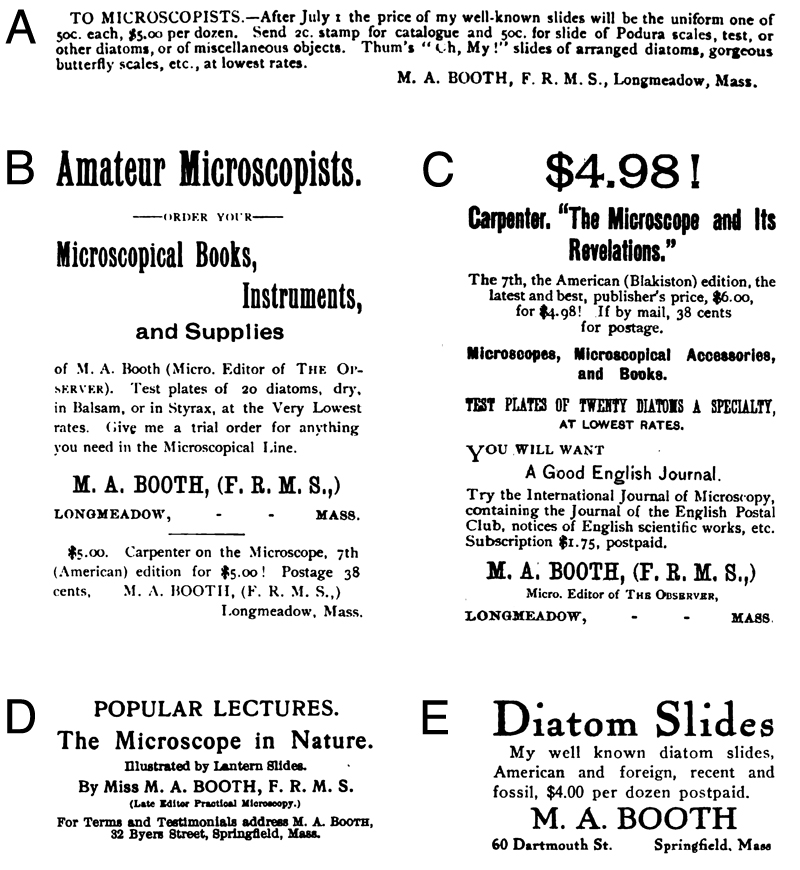
Figure 4. Advertisements published by Mary Ann Booth. (A) 1891, from the American Monthly
Microscopical Journal. (B) January, 1892,
from The Observer. (C) May, 1892,
from The Observer. By this date, Booth had realized the attraction of selling
an item for a couple of pennies below a whole dollar. (D) 1898, from The Journal of Applied Microscopy. (E) 1915, from The Transactions of the
American Microscopical Society.
Mary Ann Booth featured prominently in a 1915 magazine
article on amateur scientists, entitled “The
Irregulars of Science”. A photograph of Booth accompanied the article, as
did a photomicrograph that was presumably taken by her (Figures 5 and 6). Booth
was described thusly,
“Almost any scientific directory gives a sketch
of Miss Mary A. Booth of Springfield, Massachusetts, Fellow of the Royal
Microscopical Society of England, Fellow of the American Association for the
Advancement of Science, and one of the greatest living authorities on
photographs taken through a microscope. Her work appears in scientific circles
and in museums all over the world; and yet her entire laboratory is contained
in one corner of the guest room in her home, and the apparatus is surprisingly simple
and compact. When a guest comes, the laboratory shuts off as a closet, and the
room is again a sleeping chamber.
Miss Booth started her
great work casually. A helpless invalid in a chair at the seashore one Sunday
morning, she admired some sea weeds which a friend brought to her, and promised
to mount them on paper. That aroused her interest, and she gathered other
specimens for herself. Soon she acquired a microscope, and slowly but surely
she broadened the field of her endeavors.
A bumble bee, caught in her
garden, gave her seventeen different kinds of parasites which she mounted and
photographed with her photomicrographic camera. This gave her a new interest,
and as a result, a few years ago she undertook the great task of a study of the
parasitic life of the Pacific Coast.
Surgeon-General Rupert Blue
asked her to prepare photomicrographs to be used in San Francisco in the public
campaign against bubonic plague and she accomplished this work with great
success. At the present time she is devoting all the time she can spare to
preparing for the National Museum, at the invitation of Dr. L.O. Howard, a
print of every one of her photomicrographs of parasites, which, when completed,
will make an album collection running up into the thousands.
‘People have the erroneous
idea that costly apparatus is necessary for scientific work,’ she says. ‘It
seems to me that the simpler the tools one can do good work with, the better.’
And she tells of a dapper young man who had heard of her scientific reputation,
coming to get her to do some micrographic work for him, but dropping the matter
when he saw the homeliness of her apparatus”.
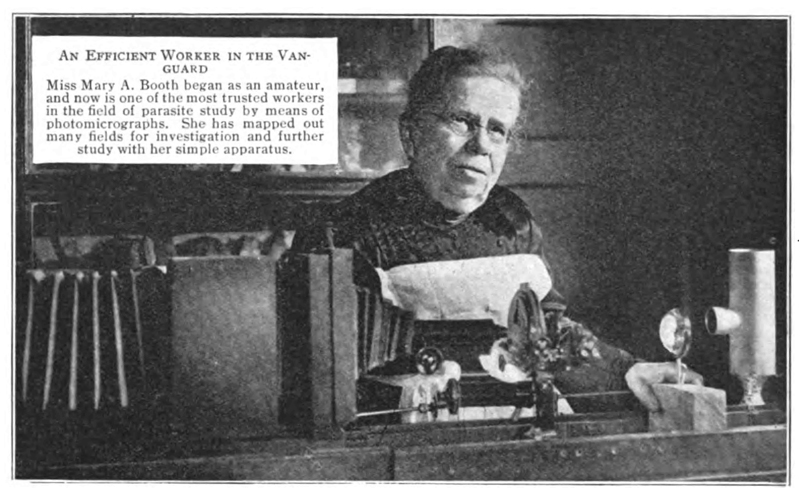
Figure 5. A ca. 1915 photograph of Mary Ann Booth, seated
behind the apparatus she used to photograph microscopical objects.
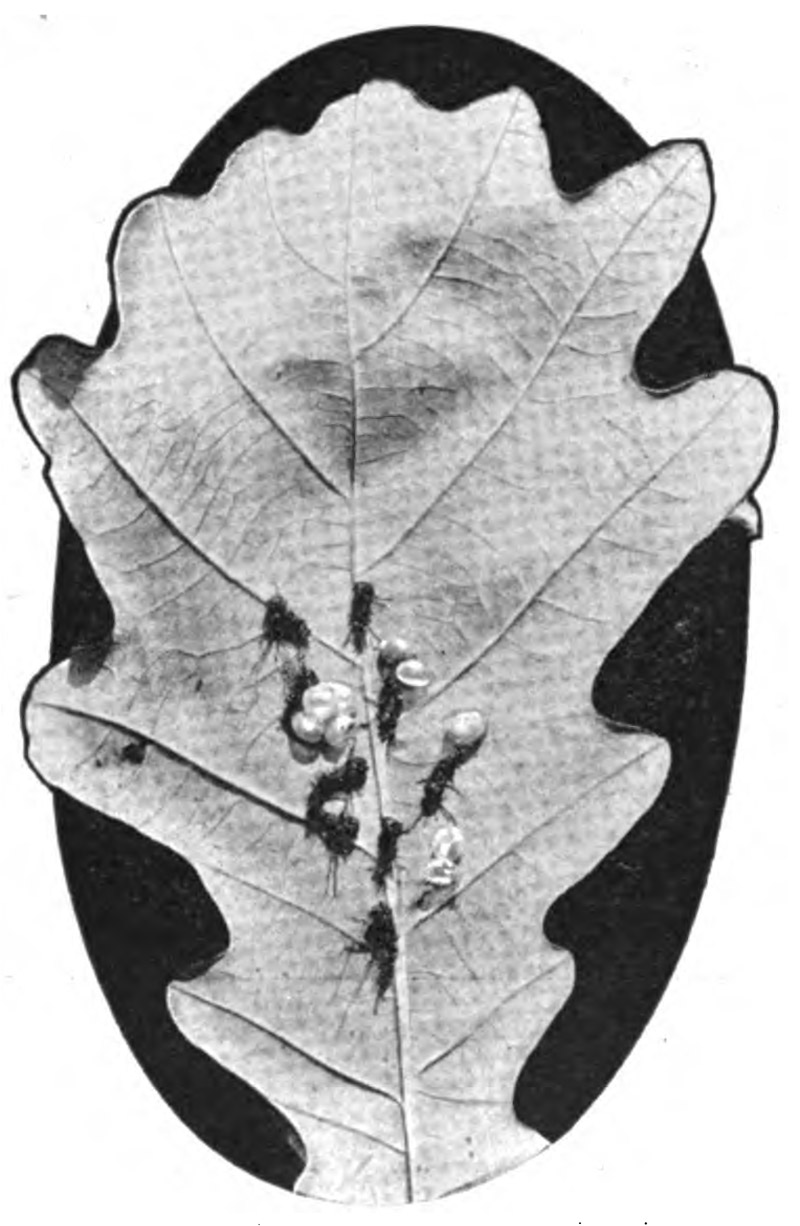
Figure 6. A photograph of a moth caterpillar emerging from an egg, which accompanied the magazine article “The Irregulars of Science”. Mary Ann Booth was the only person discussed in the article who was known for
photography, so this was presumably her work.
In 1916, Booth donated a series of her photomicrographs to
the Springfield Museum of Natural History, “Photomicrography
is the art or process of enlarging minute objects by means of the microscope
and reproducing the enlarged image by photography. A recent valuable accession
at the Museum of Natural History is a photomicrograph of the flea of a mouse,
the gift of Miss Mary A. Booth of this city. This
flea is one of the carriers of the dread disease known as bubonic
plague, of which the most serious outbreak in the United States occurred
a few years ago in San Francisco. The flea not only transmits the disease from
rat to rat, but also from rat to man. The plague always occurs among the
rodents before many cases develop in man. Hence, an accurate knowledge of these
insects is important to prevent flea breeding among rats, mice, and ground
squirrels. The photomicrograph exhibited is the first of a collection which
Miss Booth is preparing for the museum. The collection will show a series of
woods and insect appendages. Miss Booth's skill in photomicrography is unique;
her work has won honors at the great expositions, and she has been elected a
fellow of the Royal Microscopical Society of London, the Royal Photographic
Society of Great Britain, and the American Association for the Advancement of
Science. The museum in her home city is fortunate in receiving this gift of
specimens of Miss Booth's valuable work”.
Mary Ann Booth died on September 15, 1922, at the age of 79.
Both the New York Times and the New York Tribune carried obituaries, “Mary A. Booth, photo-microscopist of
international fame and one of the leading women of science in this country,
died suddenly in her home late this afternoon. She was 77 (sic) years old. Miss
Booth was born in Longmeadow, Mass., and was educated in the schools of that
town and Wilbraham. Miss Booth became especially well known when Surgeon
General Blue was waging his successful campaign against the bubonic plague in
San Francisco in 1907-08”.
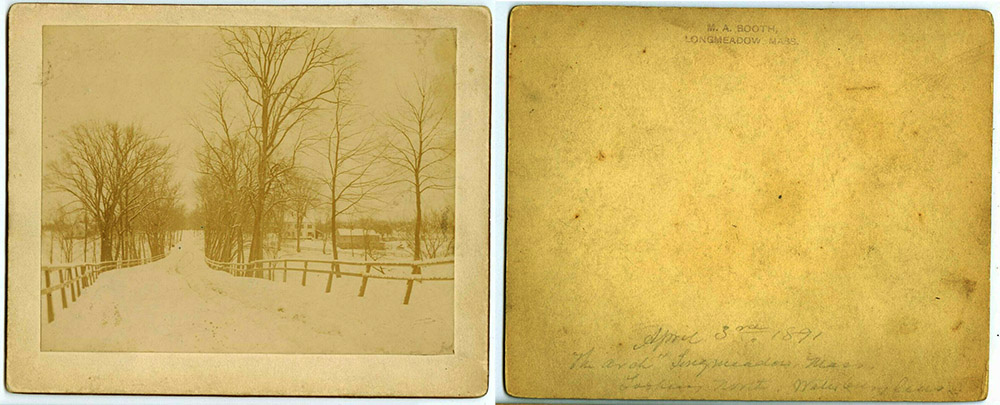
Figure 7.
A landscape photograph by Mary Ann Booth, dated April 3, 1891. She described the scene as “The Arch, Longmeadow, Mass., looking north”. Adapted for nonprofit, educational purposes from an internet auction site.
Resources
American Journal of Microscopy and Popular Science (1878) Exchange offers from M.A. Booth, Vol. 3, pages 120 and 140
American Journal of Microscopy and Popular Science (1878) Report from the San
Francisco Microscopical Society, on diatom slides obtained from M.A. Booth,
Vol. 3, page 190
American Monthly Microscopical Journal (1880) Exchange offers from M.A. Booth, Vol. 1, pages 20, 80, 100, 120 and others
American Monthly Microscopical Journal (1881)
Exchange offer from M.A. Booth, Vol. 2, page 20
American Monthly Microscopical Journal (1882)
Exchange offers from M.A. Booth, Vol. 3, pages 80 and 120
American Monthly Microscopical Journal (1884) Note on
M.A. Booth’s mosquito scale slide, Vol. 5, page 219
American Monthly Microscopical Journal (1886)
Exchange offers from M.A. Booth, Vol. 7, pages 60 and 119
American Monthly Microscopical Journal (1891) Advertisement from M.A. Booth, Vol. 12, page 168
American Naturalist (1878)
Exchange offer from M.A. Booth, Vol. 12, page 766
Booth, Mary Ann (1884) Mailing packages of diatoms, American Monthly Microscopical Journal,
Vol. 6, page 100
Booth, Mary Ann (1884) Mosquitoes and their scales, American Monthly Microscopical Journal,
Vol. 5, page 20
Booth, Mary Ann (1892) Spreading diatoms, Journal of Microscopy and Natural Science,
Vol. 11, pages 136-137
Booth, Mary Ann (1892) Diatoms of California, Popular Science News, Vol. 32, page 43
“C.H.K.” (1886) Diatom slides, Bulletin of the Torrey Botanical Club, Vol. 14, page 131
Cutter, William F. and William F. Adams (1910) Genealogical and Personal Memoirs Relating
to the Families of the State of Massachusetts, Vol. 3, pages 1467-1469
Dearden, William H. (1915) The irregulars of science, Illustrated World, Vol. 24, pages
450-455
Educational Exhibits and Conventions at the World's Industrial and
Cotton Centennial Exposition, New Orleans, 1884-'85 (1886) Women’s Department Diplomas of Honor, Entomology. US
Government Printing Office, Washington, DC, page 217
Guide to Nature (1908) “Announcement, beginning with the May issue,
Miss M.A. Booth, of
Springfield, Massachusetts, will take charge of a department of ‘Practical
Microscopy’. Miss Booth was for many years an editor of The Observer magazine,
and is well known to all who use the microscope for serious scientific work or
for pleasure”, Vol. 1, page 27
Hardwicke’s
Science-Gossip< (1889) Exchange offer from M.A. Booth,
Vol. 25, page 284
Journal of Applied
Microscopy (1898) Advertisement from M.A. Booth, Vol. 1, unnumbered
page
Journal of the Royal
Microscopical Society (1886) Why do dry mounts fail?, page 720
Journal of the Royal
Microscopical Society (1889) New Fellows, page 319
Journal of the Royal
Microscopical Society (1889) Finishing slides, page 471
The Microscope (1886) Exchange offers from M.A. Booth, Vol. 6, pages 48, 120, 240 and 264
The Microscope (1887) Note that M.A. Booth will be offering slide-making
instructions, and acknowledgment that the journal received “five bottles of washed diatoms from various
sources; also, slides of same, exceedingly well mounted”, Vol. 7, page 250
New York Times (1922) Obituary
of M.A. Booth, issue of Sept. 16
New York Tribune (1922)
Obituary of M.A. Booth, issue of Sept. 16
The Observer (1892) “Microscopy, Contributions and queries in
regard to microscopical work are requested. Address all communications to the
editor of this department, M. A. Booth, PO Box 51, Longmeadow, Mass.”, Vol. 3, unnumbered front pages of April, May, June and other issues
The Observer (1892)
Numerous advertisements from M.A. Booth, Vol. 3, unnumbered pages in the
“advertiser” sections
Proceedings of
the American Society of Microscopists (1885) “Miss M.A. Booth distributed to the members
present samples of Atlantic coast diatoms procured and prepared by herself”,
Vol. 7, page 207
Springfield City Library Bulletin (1916) Photomicrographs, Vol. 37, page 106
United States of America census records, accessed through
ancestry.com
Transactions of the
American Microscopical Society (1915) Advertisement from M.A.
Booth, Vol. 34, classified advertisement section, unnumbered page






